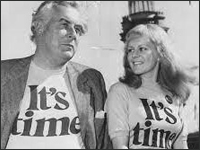 In 1911, French physician and psychologist Édouard Claparède published his observations of a female amnesiac patient. The woman was suffering from a debilitating form of amnesia which left her incapable of forming new memories. She had suffered localized brain damage that preserved her basic mechanical and reasoning skills, along with most of her older memories, but beyond the duration of a few minutes, the recent past was lost to her.
In 1911, French physician and psychologist Édouard Claparède published his observations of a female amnesiac patient. The woman was suffering from a debilitating form of amnesia which left her incapable of forming new memories. She had suffered localized brain damage that preserved her basic mechanical and reasoning skills, along with most of her older memories, but beyond the duration of a few minutes, the recent past was lost to her.
Claparède’s patient would have seemed straight out of a slapstick farce had her condition not been so tragic. Each day the doctor would greet her and run through a series of introductions. If he then left for 15 minutes, she would forget who he was, and the same introductions would happen all over again.
One day, Claparède decided to vary the routine. He introduced himself to the woman as usual, but when he reached out to shake her hand for the first time, he concealed a pin in his palm.
It wasn’t friendly, but Claparède was on to something. When he arrived the next day, his patient greeted him with the usual blank welcome and with no memory of the previous day’s activities – until Claparède extended his hand. Without being able to explain why, the woman refused to shake his hand. She was incapable of forming new memories, yet she had nevertheless remembered something – a subconscious sense of danger, a remembrance of past trauma. She failed to recognize the face and the voice she’d encountered every day for months, but somehow, buried in her mind, she remembered a threat.
I’m indebted to Gerry from Rants, Raves, Reviews & Reflections for his excellent summary of Claparède’s famous experiment.
It’s been said that ‘Those who ignore history, are destined to repeat it.’
How then do we help people to remember?
Last week, we repeated the phrase, ‘Lest we forget’.
What pins can we plant into public discourse to ensure that we do not repeat the disasters of the past?
For example, in 1972, Labor leader Gough Whitlam was elected on the back of a great campaign song called It’s Time. Some of the lyrics went like this:
It’s time for freedom,
It’s time for moving, It’s time to begin,
Yes It’s time.
It’s time for children,
It’s time to show them, Time to look ahead,
Yes It’s time.
Time for better,
Come together, Time, Time, Time,
Yes It’s time.
It’s Time became the most memorable song and slogan in Australia’s political history. It did more than sell a political message, it captured a mood, a vibe.
As a 20-year-old public servant at the time, naturally I voted for it!
It didn’t take long however, for Whitlam’s real agenda to leap out of the song’s Trojan Horse.
Once elected, Whitlam made the not-so-modest statement, “There are moments in history when the whole fate and future of nations can be decided by a single decision. This is such a time.”
What followed was massive social and economic policy upheaval.
Unemployment, inflation and a total failure to manage the economy led to Labor suffering a massive defeat in 1975.
We voted Whitlam in on the ‘vibe’. When we realised what we’d done, however, we quickly voted him out again.
But imagine for a moment that Whitlam’s policies had been inserted into our Constitution and not just into legislation.
Whitlam was temporary. The Voice will be permanent.
The Whitlam disaster is our Claparède pin.
It’s Time …
…. to Vote No.